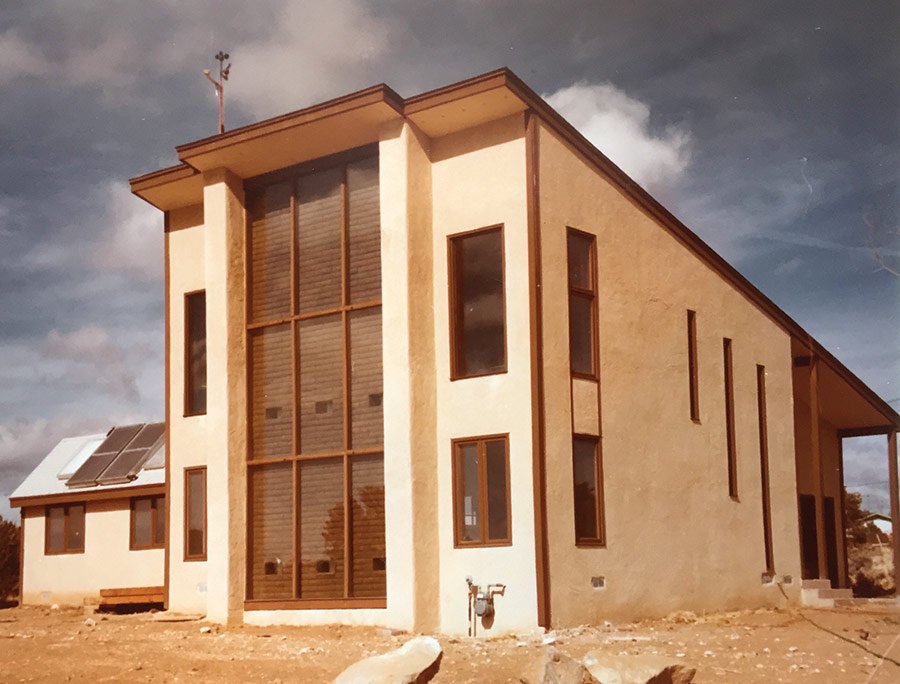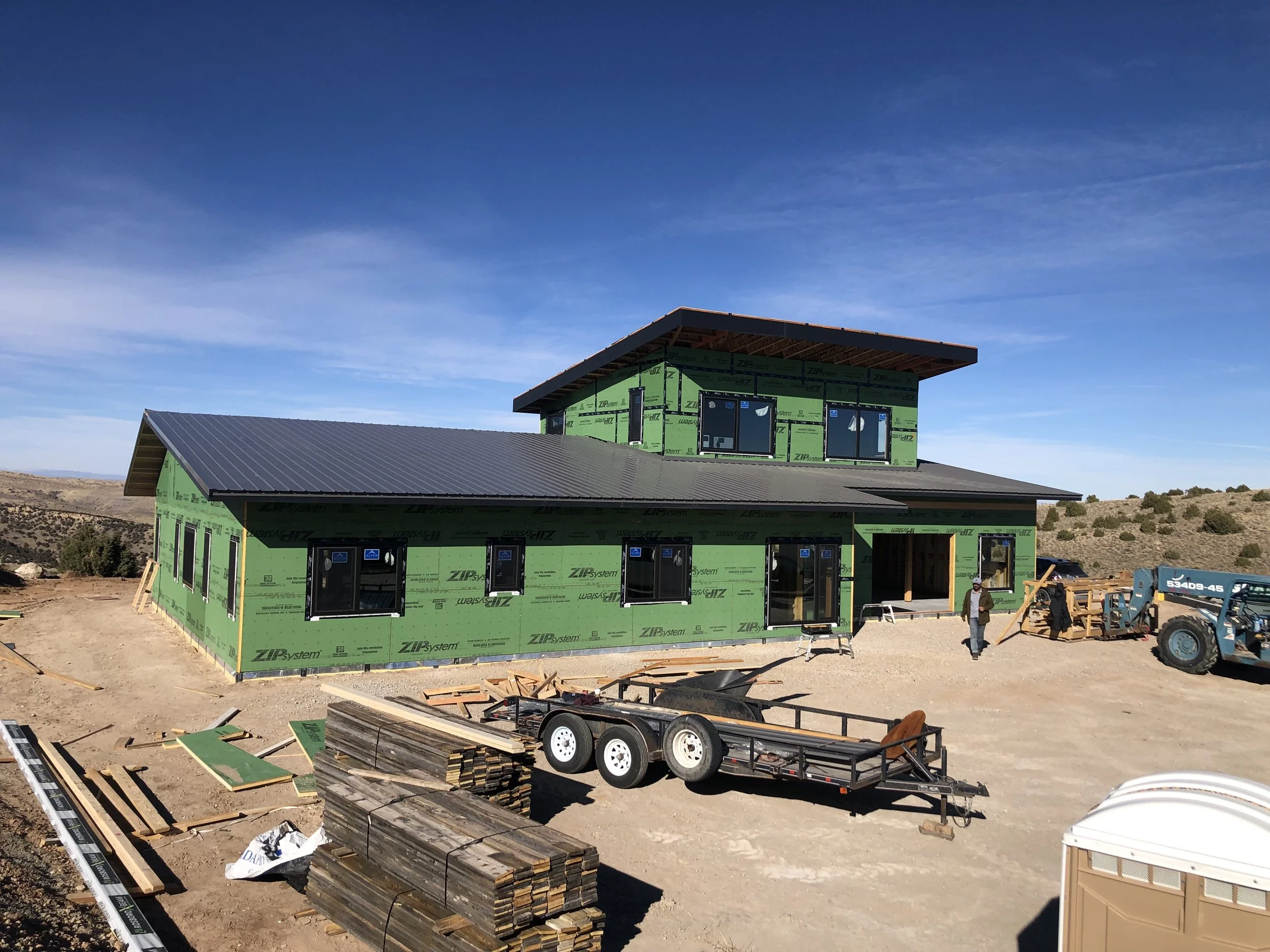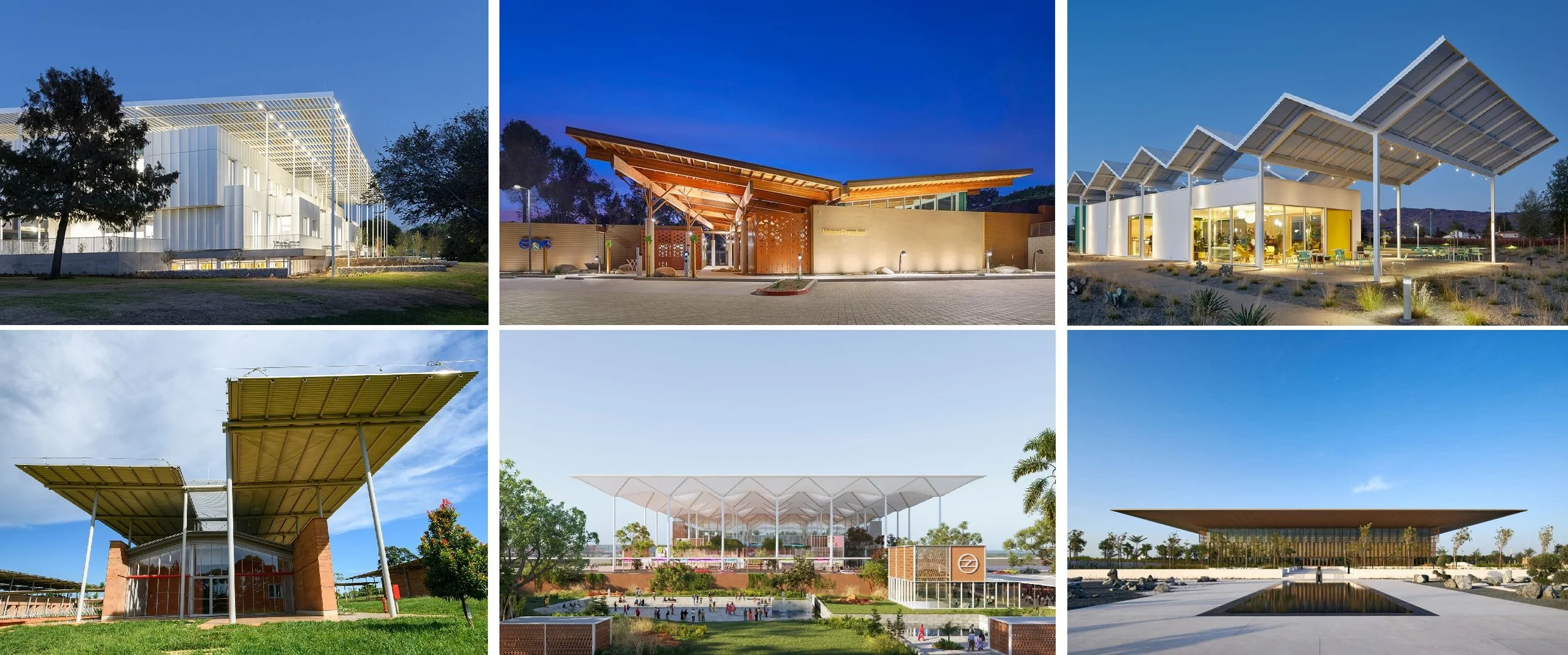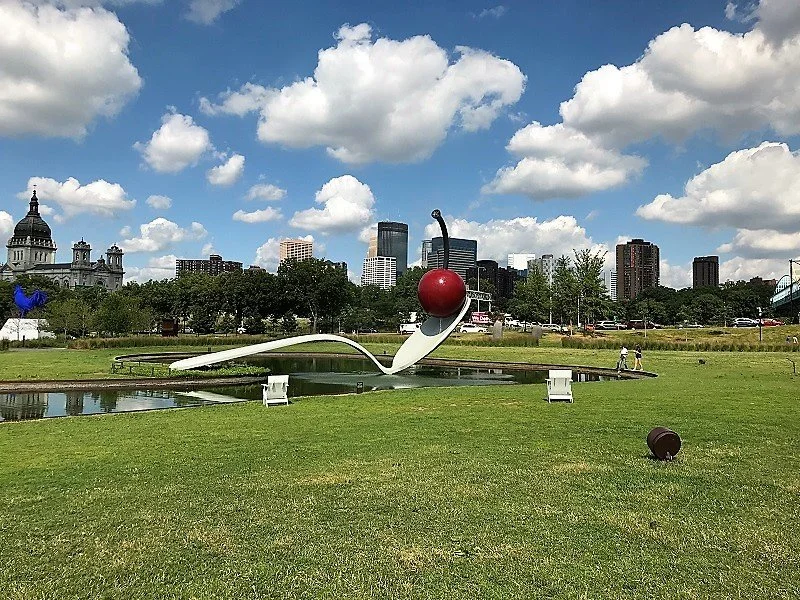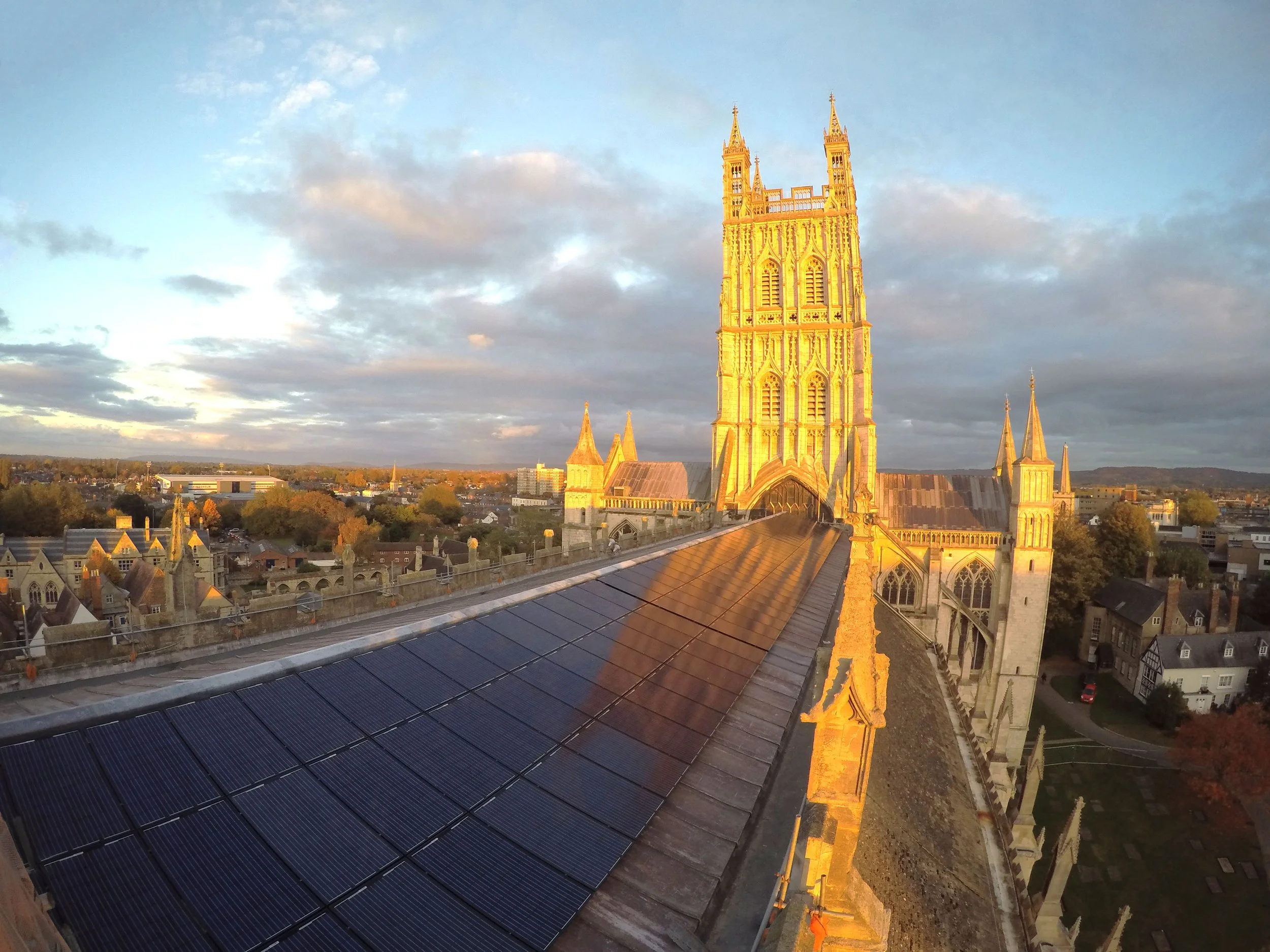Best of 2022
/Cheers to 2022! Here are a few notes on the year in review.
Solar House History: The Hunn House
Earlier this year I was happy to see that Bruce Hunn wrote a retrospective piece for the American Solar Energy Society (ASES) website. It reminded me that Hunn, an engineer, built one of the most striking solar houses of the 1970s. A two-story trombe wall—what a remarkable example of solar form! Because of its expressive power, you might be wondering: who was the architect? Hunn designed the house himself, he says, “with the assistance of designer and architect friends.”
Hunn House, White Rock, New Mexico (1976)
The Hunn house is not included in The Solar House; I honestly don’t remember why it did not make it into the final edit. (There were so many examples after 1973!)
Solar Decathlon
I’m loosely involved with the University of Wyoming’s project for the 2023 Solar Decathlon—“Wind River”—which is now under construction near Lander, Wyoming. UW students designed the house and its systems. The project’s emphasis is to show zero-energy houses are market-ready; thus there are no experimental technologies and it is designed in a “Minimal Mountain Modern” style (credit to student Erika Ferrell for that label).
The competition will occur in April 2023 and I’m excited for our student team! We’re collaborating with Cory Toye (Timshel Construction) who is financing and building the project.
Follow along at the project website; new content coming throughout the Spring.
In the past, both in The Solar House and here on the blog, I was fairly critical of the Solar Decathlon. When the Decathlon required transportable houses to be small, transportable (lightweight), and essentially temporary and site-less, I felt that it was sending the wrong message about low-energy and solar architecture. It was also very expensive for schools. Now that the competition is refocused on permanent buildings, local sites, and collaborations with builders, I’m happy to be a part of it.
The Big Roof, redux
A few years ago I christened “The Big Roof” as a new style for signature public buildings. The Big Roof is an expressive environmental feature, providing shade and a greater area for solar panels. Often the roof is formally detached from the main body of the building, with its own structure. Here are some newer examples confirming the trend.
1. Houston Endowment Headquarters by Kevin Daly Architects link
2. Environmental Nature Center and Preschool by LPA Design Studios link
3. Ashes & Diamonds winery by Barbara Bestor link
4. Children’s Surgical Hospital in Uganda by Renzo Piano Building Workshop link
5. Delhi Noida International Airport by Nordic Office of Architecture, Grimshaw, and Haptic link
6. House of Wisdom (Sharjah Digital Library) by Foster + Partners link
Travels: Minneapolis
On a short trip to Minneapolis (my hometown) I only had about an hour of free time, and I stopped at the Walker Art Center and captured this familiar view. And RIP to Claes Oldenburg, who passed away in 2022.
Publications & Talks
• My article “Bruno Mathsson’s Solar Architecture” was published at nonsite.org. Mathsson is well-known as a furniture designer, but he also created a new language of glass architecture for Swedish homes and introduced several environmental innovations. Despite Mathsson’s interest in Fred Keck and the solar house movement, I conclude that his houses could not have delivered energy savings as designed. I wrote a summary here.
• My article “Gregory Ain: Under Surveillance” was published in the book Notes from Another Los Angeles: Gregory Ain and the Construction of a Social Landscape (MIT Press), edited by Anthony Fontenot. It concludes: “Was Ain the most dangerous architect in America at midcentury? It certainly appears he was viewed as such, within the FBI, and treated as such. Did he earn that distinction willingly? It certainly appears so.” A summary is here, and a review in The Nation is here.
• In August I spoke to the staff of Unity Homes, in New Hampshire, about Swedish house factories.
• In April, with Robert Boyce, I spoke about Fred Keck's 1933 House of Tomorrow for the Elmhurst Art Museum. link to video
• In March I gave a talk called “People who live in glass houses...” to the UW Honors colloquium. It looked at Hardwick Hall, the Palm house at Kew, and the Farnsworth house, through different interpretive lenses.
Historic architecture, plus solar
Check out Gloucester Cathedral!
Thanks for Visiting
solarhousehistory.com had 16,900 pageviews in 2022. That's about 46 per day.
The most popular blog topics were:
Le Corbusier and the Sun (1,020 pageviews)
Surface Reading (710)
Zeilenbau orientation and Heliotropic housing (700)
In the News: The Dover Sun House (650)
Tools: The Shading Protractor (530)
Edison’s Famous Quote (470)
Solarpunk heritage: Peter van Dresser (400)
The Roman Baths and Solar Heating (400)
● ● ●
Best of 2021
Best of 2020
Best of 2019
Best of 2018
Best of 2017
Best of 2016
Best of 2015
The Solar House: 2013 Year in Review


